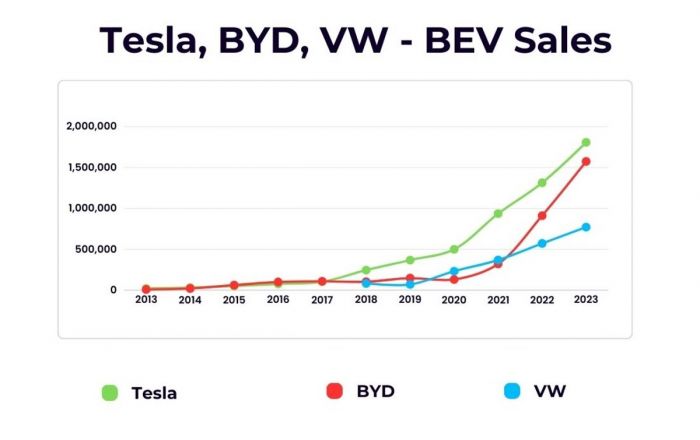In every possible way, the new Mazda CX-5 is designed to impress. It makes its drivers feel special, thanks to the richly appointed interior and choices of excellent engine options. With a price tag closer to a CR-V than a Macan, the CX-5 perfectly serves buyers from all tax brackets. And although the vehicle's non-turbo model doesn't highlight its dynamic personality like the turbo version, it offers unrivaled performance in the compact crossover segment.
This article focuses on the non-turbo engine of the Mazda CX-5. The engine is code-named 2.5L SkyActiv-G PY-VPS.

Key features and my opinion about the engine
- Production years:2013-now
- Average lifespan of PY-VPS:210,000-240,000 miles
- Fuel supply type:direct injection
- Power range:185-195 hp
- Fuel efficiency:good
- Engine block material:aluminum
- Engine reliability score:medium
- The most common problems:oil consumption, complicated fuel-supply system, drive belt problems, electronic thermostat issues.
2022 Mazda CX-5 2.5L SkyActiv-G Non-Turbo Engine - Preview
The 2022 Mazda CX-5 standard engine, a 187-horsepower four-cylinder, offers great throttle response when driving around town or leaving a stoplight. You will only notice a significant difference from the turbocharged version when trying to overtake.
The engine is paired with a well-behaved six-speed automatic gearbox and an all-wheel drive system. Although it doesn't offer as much power as required, the CX-5 non-turbo model is designed and engineered to be driven softly for ultimate fun. Its steering is precise, and cornering is composed. You will love it on a Sunday evening cruise with the family.
The 2.5L SkyActiv-G was first introduced in 2013 with the first generation CX-5, the Mazda KE CX-5. Before the 2.5L, Mazda had already introduced a 2.0L SkyActiv-G. Since the 2.0L model was an excellent engine, Mazda upgraded it to build the 2.5L version. The new engine featured updated ideas and technologies and was more powerful and efficient. It not only featured a larger displacement but also had unique components.
Features of the Mazda CX-5 2.5L SkyActiv-G Engine
Mazda introduced the 2.5L SkyActiv-G PY-VPS to replace the 2.5-liter four-cylinder L5-VE engine that exited the market in 2012. As a result, the two units have a lot in common.
Here are some of the features of the new 2.5L SkyActiv-G.
- Engine Block
The Mazda 2.5L SkyActiv-G features an aluminum alloy block and steel-molybdenum alloy bores. It has 89.0mm bores and 100.0mm stroke, displacing 2,488cc. The cylinder block features a deep skirt type, forming a ladder frame with the integrated bearing cap. It features a closed-deck water jacket.
The engine has a cassette-type balancer with two balancer shafts that rotate at twice the speed of the crankshaft. The double speed of the balancer shafts helps offset the rotating system's secondary inertia force. Mazda uses a gear attached to the crankshaft to minimize drive losses to drive the balance shafts.
- The Cylinder Head
The Mazda CX-5 2.5L engine has an aluminum-silicon cylinder head. It has two overhead camshafts driven by a timing chain, which uses oil pressure and the spring force of the chain tensioner to tension the timing chain automatically. The Mazda 2.5L engine has four valves per cylinder actuated by rocker arms that come with needle roller followers designed to minimize the area of contact with the camshaft, significantly reducing friction.
- Fuel Injection and Ignition
The Mazda 2.5L engine uses a direct fuel injection system with six-hole injection nozzles for enhanced mixture formation. The six-hole nozzles also help in improving the evaporative cooling effect created when fuel evaporates within the combustion chambers.
The CX-5 2.5L engine features a compression ratio of 13.0:1. When this ratio increases beyond the required limits, the temperature at compression TDC (top dead center) rises, increasing the chances of knocking. Mazda reduced the amount of hot exhaust gases left inside the combustion chambers and delayed the ignition timing to prevent the engine from knocking.
Mazda uses a piston cavity and optimized fuel injection to ensure the engine maintains stable combustion even with delayed ignition timing. This is to create a stratified ratio of air: fuel mixture around the spark plug. The piston cavity also enhances cooling by reducing the chances of flame coming into contact with the piston head, which causes a cooling loss.
2022 Mazda CX-5 2.5L Non-Turbo Engine - Reliability and Maintenance
The reliability of any engine is directly related to its maintenance, and these two are the biggest determinants of how long you can keep using the engine - longevity. The reliability of an engine can be determined in several ways; one is how well the engine serves its primary purpose, and two, how long it can serve that purpose.
If you bought your CX-5 for the family, it should be able to do the job to your satisfaction. The engine should be able to push your CX-5 through city streets without hustling and long road trips comfortably. On the other hand, if you purchased the new CX-5 in 2022, it shouldn't ask for an engine replacement or any serious engine repairs in the next two or three years - that's not reliable.
That said, how reliable is the 2022 Mazda CX-5 non-turbo engine, and how should you ensure it is well-maintained?
From owners' perspectives, the Mazda CX-5 with the base engine is reliable. Although it won't be as rewarding as the turbo model when you drive, the engine can stay with you for many years. And since the 2022 CX-5 is barely new, many of these conclusions are solely based on Mazda's excellent track record of efficiency and reliability.
In regards to maintenance, Mazda has a few recommendations as to how you should keep your 2022 CX-5 base engine running smoothly for years.
The manufacturer recommends maintenance works to be done every 9,300 miles. However, for ultimate driving pleasure, you can change the oil every 4,600 miles. Short oil-change intervals ensure proper lubrication and cooling of your engine unit are always maintained.
The reliability and longevity of any engine depend on how well you keep it serviced. Using the right lubricants and fuel ensures that your engine is always at its optimal performance.
Common Problems of the 2022 Mazda CX-5 2.5L Non-Turbo Engine
One of the primary points to note before pointing out these problems is that they may also affect the turbo version of this engine. That is primarily because the turbo engine is an upgraded version of the base engine.
To that end, the Mazda CX-5 is powered by the 2.5L PY-VPS engine introduced in 2013. It is still a young power unit with a limited history. And although the unit has already built a reputation as one of the most reliable Mazda engines, it still has its fair share of faults. After all, it is a mechanical unit with mechanical components.
Some of the problems associated with this engine include:
- Power Loss
The Mazda CX-5 non-turbo suffers from power loss and excessive fuel consumption. When this problem arises, faulty fuel systems and injectors are the main culprits. When you feed your engine with the wrong or poor-quality fuel, the engine's injectors become clogged, leading to excessive power loss. When injectors are clogged, they cannot deliver the required power.
To compensate for the lost power, your engine draws more fuel, which means excessive fuel consumption.
- Oil Pressure Alarm
At some point, your engine oil level will go down and cause the insufficient oil pressure alarm to go off. Leakages or other reasons can cause low oil levels. When this alarm goes off, find a parking spot and check the oil levels. You can add the lubricant if required.
If the problem persists, you should kill the engine and call your service center for assistance. You can either have a mobile technician check the vehicle or tow it to your nearest Mazda service center. The technician will open the engine and check to determine the cause of the oil pressure alarm.
- Rustling Sound
Another problem associated with the Mazda CX-5 engine is the rustling sound caused by the timing chain. You will hear this sound clearly at low engine speed. When you notice this sound, your timing chain is overly extended. Luckily for you, this problem has a simple fix. You can open the engine and inspect it yourself. You can easily replace the drive chain if it is damaged.
Conclusion
The 2022 Mazda CX-5 is powered by a pretty young engine. However, despite its few years of existence, the engine has proven reliable and long-lasting. Even in its base version, the Mazda CX-5 has shown what it can do in terms of engine performance and reliability.
The 2022 Mazda CX-5 base model does not have many problems related to its engine performance. Many enthusiasts find it impressive thanks to its fuel and thermal efficiency. It perfectly fits the profile of an excellent city commuting motor and a perfect road trip machine. It has high fuel economy numbers and no serious faults to deal with.
All you have to do to enjoy a long life with your new Mazda CX-5 base model is to take excellent care of it. Follow your mechanic's service schedules religiously, and you will never be stranded on the roadside.
About the authors
The CarAraC research team is composed of seasoned auto mechanics and automotive industry professionals, including individuals with advanced degrees and certifications in their field. Our team members boast prestigious credentials, reflecting their extensive knowledge and skills. These qualifications include: IMI: Institute of the Motor Industry, ASE-Certified Master Automobile Technicians; Coventry University, Graduate of MA in Automotive Journalism; Politecnico di Torino, Italy, MS Automotive Engineering; Ss. Cyril and Methodius University in Skopje, Mechanical University in Skopje; TOC Automotive College; DHA Suffa University, Department of Mechanical Engineering






Add comment